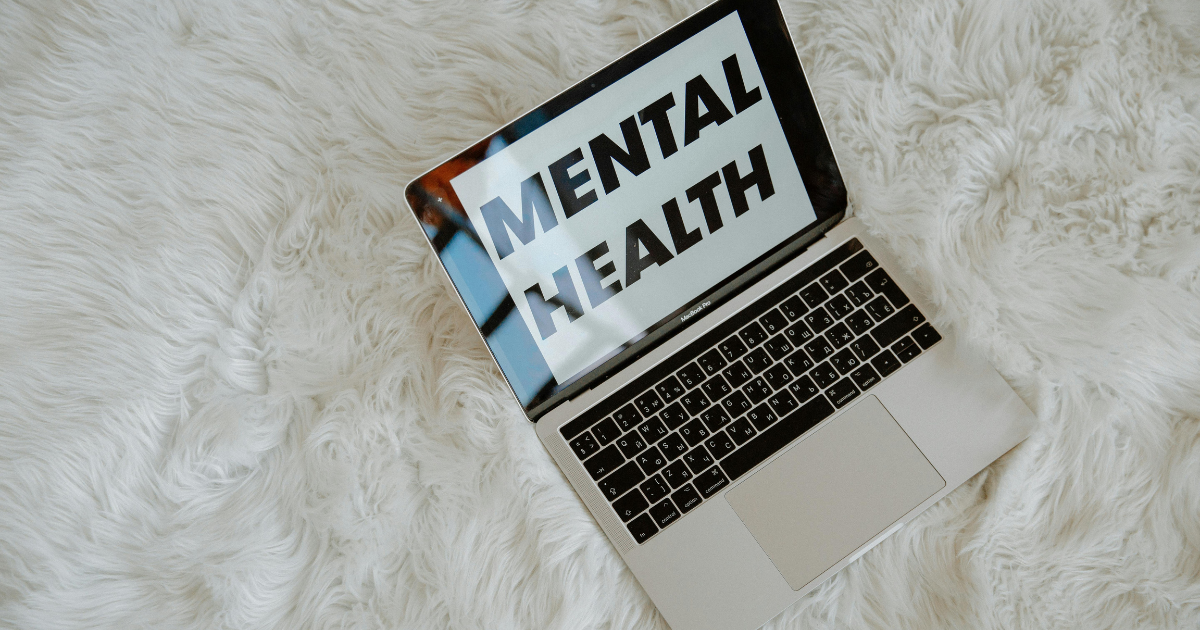What is PTSD? Post-Traumatic Stress Disorder (PTSD) is a mental health condition triggered by experiencing or witnessing a traumatic event. It’s a disorder that can disrupt daily life, affecting how someone feels, thinks, and behaves. PTSD is more than just feeling stressed or anxious after a traumatic event; it’s a persistent condition that can profoundly impact one’s emotional and physical well-being. This condition often coexists with other anxiety disorders, such as panic disorder, where individuals experience intense fear and physiological reactions, like a racing heart or physical symptoms such as stomach aches.
Essential Takeaways
- Chronic Illness and Mental Health Are Interconnected: Chronic illness can significantly impact mental health, often leading to depression, anxiety, and stress. Recognizing this connection is key to effective management and improved quality of life.
- Effective Coping Strategies Can Make a Difference: Techniques such as cognitive-behavioral therapy, mindfulness, and a strong support network are vital for managing mental health challenges related to chronic illness. Regular self-care and realistic goals further support emotional stability.
- Seeking Professional Help Is Essential: When self-help efforts aren’t enough, professional support is crucial. Mental health professionals can provide specialized care and treatment that complements chronic illness management, leading to more comprehensive and effective treatment.
The trauma that leads to PTSD can vary widely, from combat experiences to natural disasters and from personal assaults to the sudden loss of a loved one. The symptoms are not just about reliving the traumatic event but also about how it alters a person’s sense of safety and stability. For some, PTSD might develop after childhood traumas, including childhood sexual or physical abuse, leading to complex post-traumatic stress disorder (Complex PTSD), which has its own unique set of challenges.
Common Causes of PTSD Understanding the common causes of PTSD helps in recognizing the breadth of the disorder. Here are some typical triggers:
- Combat Exposure: Veterans and military personnel often experience PTSD due to combat situations, including violent encounters and life-threatening events. Combat veterans may also deal with co-occurring conditions like substance misuse or cardiovascular disease, complicating the PTSD treatment process.
- Accidents and Natural Disasters: Events like car crashes, earthquakes, or floods can be traumatic enough to cause PTSD.
- Violent Incidents: Assaults, abuse, or witnessing violence can leave lasting psychological scars. This includes intimate partner violence and sexual assault, which can lead to extreme reactions and distressing memories.
- Loss and Grief: The death of a loved one or experiencing significant loss can also lead to PTSD, especially if the loss is sudden or traumatic.
Recognizing PTSD Symptoms
- Intrusive Memories: One of the hallmark symptoms of PTSD is experiencing intrusive memories. These can include flashbacks where the person feels as though they are reliving the traumatic event or distressing dreams related to the trauma. These memories can be sudden and overwhelming, often triggered by event reminders.
- Avoidance and Numbness: Individuals with PTSD may engage in avoidance behaviors. They might steer clear of places, people, or activities that remind them of the trauma. This avoidance is often accompanied by emotional numbness, where the person feels detached from others and experiences a lack of emotional connection. Avoidance symptoms also include avoiding external reminders of the traumatic event, such as places, conversations, or objects that are closely linked to the trauma.
- Increased Arousal: Increased arousal symptoms include heightened anxiety and an exaggerated startle response. This can manifest as irritability, difficulty sleeping, or a constant feeling of being on edge. This state of hypervigilance might lead to physical reactions like increased heart rate and blood pressure, contributing to overall physical health decline.
- Negative Mood and Cognitions: PTSD can severely affect mood and cognition. Individuals might experience persistent negative emotions, hopelessness, and difficulty maintaining relationships. They may have a skewed view of the world, believing it to be more dangerous than it is, or feel disconnected from others. These mood symptoms often overlap with other disorders in adults, such as antisocial personality disorder or borderline personality disorder, making treatment more complex.

Diagnosing PTSD
- Diagnostic Criteria: The diagnosis of PTSD is based on criteria outlined in the DSM-5 (Diagnostic and Statistical Manual of Mental Disorders). According to the DSM-5, a diagnosis of PTSD requires the presence of specific symptoms, including:
- Exposure to a traumatic event
- Intrusive symptoms such as flashbacks or nightmares
- Persistent avoidance of trauma reminders
- Adverse changes in mood and cognition
- Increased arousal and reactivity
- Symptoms lasting for more than a month and causing significant distress or impairment
- Professional Evaluation: Getting an accurate diagnosis is crucial for effective treatment. A mental health professional will thoroughly evaluate, including a clinical interview and possibly standardized questionnaires. A comprehensive evaluation will also consider co-occurring conditions like substance abuse or chronic trauma, ensuring a holistic approach to treatment. This assessment helps determine the severity of symptoms and craft an appropriate treatment plan.
Treatment Options for PTSD
- Conventional Therapies
- Cognitive Behavioral Therapy (CBT): CBT is a widely used approach for treating PTSD. It focuses on identifying and changing negative thought patterns and behaviors associated with trauma. CBT helps individuals understand how their thoughts influence their feelings and behaviors, allowing them to develop healthier coping strategies.
- Exposure Therapy: Exposure therapy is a form of CBT that gradually exposes individuals to trauma-related memories and situations in a controlled environment. The goal is to reduce avoidance behaviors and lessen the emotional impact of trauma-related memories. Exposure therapy helps individuals confront their fears in a safe space, addressing avoidance symptoms and reducing the power of distressing memories.
- Eye Movement Desensitization and Reprocessing (EMDR): EMDR involves processing traumatic memories through guided eye movements or other forms of bilateral stimulation. This therapy aims to help individuals reprocess and integrate traumatic memories, reducing their emotional charge and impact.
- Medication: Medications can be a practical part of PTSD treatment, especially when used alongside psychotherapy. Antidepressants like selective serotonin reuptake inhibitors (SSRIs) and anti-anxiety medications can help manage symptoms such as depression and anxiety. For some patients with PTSD, a combination of medications may be necessary to address the full spectrum of symptoms. Medications should always be prescribed and monitored by a healthcare professional.

- Alternative and Complementary Therapies
- Art and Music Therapy: Art and music therapy provide non-verbal ways to express and process trauma. These therapies can help individuals creatively explore their feelings and experiences, facilitating emotional expression and healing. These therapies are particularly beneficial for those with Dissociative symptoms, as they offer a way to reconnect with feelings in a non-threatening manner.
- Mindfulness and Meditation: Mindfulness and meditation practices can be beneficial in managing PTSD. They help individuals develop awareness of the present moment and reduce the impact of distressing thoughts and emotions. Regular practice can improve emotional regulation and stress management. Mindfulness practices also help in reducing emotional numbing, a common reaction to trauma.
- Yoga and Physical Exercise: Physical activities like yoga can support mental health by reducing stress and improving overall well-being. Exercise also helps manage PTSD symptoms by promoting relaxation and enhancing mood through the release of endorphins. For those with PTSD, regular physical exercise can counteract the effects of stress reactions and provide a sense of control over one’s body and mind.
Coping Strategies and Self-Help
- Building a Support Network: Having a solid support network is essential for managing PTSD. Support from friends, family, and support groups can provide emotional comfort and practical assistance. This support is vital for reducing social isolation, which often accompanies PTSD and contributes to additional symptoms such as depression or anxiety. Connecting with others who understand your experience can be particularly validating and helpful.
- Self-Care Practices: Incorporating self-care into daily life is crucial for managing PTSD. This includes maintaining a consistent routine, practicing relaxation techniques such as deep breathing exercises, and ensuring adequate sleep and nutrition. Self-care also involves addressing co-occurring conditions, such as substance misuse or physical ailments, that can exacerbate PTSD symptoms. Self-care practices can help reduce stress and enhance overall emotional well-being.
- Setting Realistic Goals: Setting small, achievable goals can be motivating and help individuals regain a sense of control. Celebrating progress and acknowledging small victories builds resilience and confidence. Setting goals that address behavioral symptoms, like avoiding destructive behaviors or impulsive behavior, is essential for long-term recovery. Realistic goal-setting helps manage expectations and maintain focus on recovery.
Seeking Professional Help
- When to Seek Help: If PTSD symptoms persist or worsen despite self-help efforts, seeking professional help is essential. Indicators that professional support may be needed include severe or disruptive symptoms, difficulties in daily functioning, and negative impacts on relationships. In cases where PTSD is compounded by ongoing trauma or chronic illness, professional intervention becomes even more critical.
- How to Find a Therapist: Finding the right therapist involves researching credentials, seeking referrals, and considering different therapy styles. Look for a mental health professional with experience in treating PTSD and who uses evidence-based approaches. Consider consulting a social worker or other mental health specialists who can provide additional guidance on treatment options. An initial consultation can help determine if the therapist’s approach aligns with your needs and preferences.
Mental Health Center of San Diego
Conclusion
- Embracing the Journey to Healing: Recovering from PTSD is a journey that requires patience, support, and perseverance. It’s important to remember that healing is possible with the right treatment and support. This includes recognizing the role of co-occurring conditions, such as depression or substance abuse, in your recovery process. By seeking help, practicing self-care, and building a solid support network, individuals with PTSD can take significant steps toward reclaiming their lives.
- Prioritizing Mental Health: Mental health is a critical aspect of overall well-being. By addressing PTSD and related symptoms, individuals can improve their quality of life and find greater peace and stability. This holistic approach considers all aspects of well-being, including physical health, emotional balance, and social connections, ensuring a comprehensive recovery process. It’s essential to recognize the importance of mental health in the healing process and to seek the care and support needed to navigate this challenging condition.











